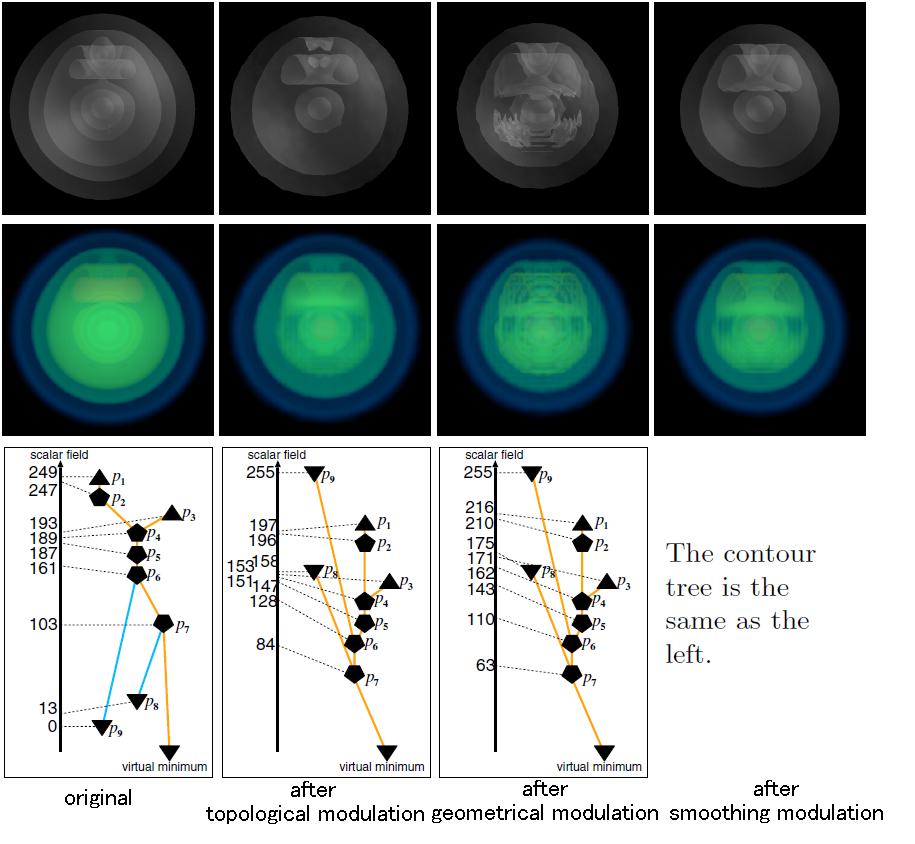Abstract
Volume datasets have been a primary representation for scientific visualization with the advent of rendering algorithms such as marching cubes and ray casting. Nonetheless, illuminating the underlying spatial structures still requires careful adjustment of visualization parameters each time when a different dataset is provided. This paper introduces a new framework, called feature-driven volume fairing, which transforms any 3D scalar field into a canonical form to be used as communication media of scientific volume data. The transformation is accomplished by first modulating the topological structure of the volume so that the associated isosurfaces never incur internal voids, and then geometrically elongating the significant feature regions over the range of scalar field values. This framework allows us to elucidate spatial structures in the volume instantly using a predefined set of visualization parameters, and further enables data compression of the volume with a smaller number of quantization levels for efficient data transmission.
Paper
|
